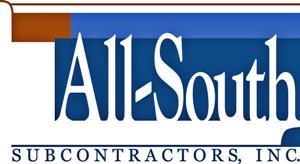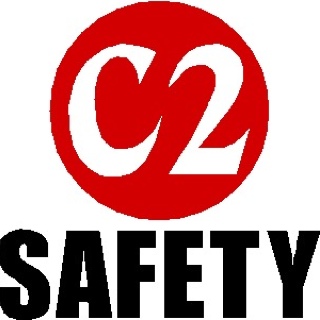Information
-
-
Job Number
-
Conducted on
-
Prepared by
-
Location
-
Foreman
- Stuart Martin
- Jose Arriaga
- Maximina Rivera
- Billy Latham
- Mark Kimbrell
- Bruce Hester
- Francisco Arriaga
- Other
General Hazards
-
Activity Hazard Analysis?
-
Are there trip hazards to the general public presented by trailing cables/equipment by cordoning off and displaying signs, Cone barriers<br>
-
Actions taken
-
Add media
-
Are there any slip hazard presented from wet pathways/walkway to general public by cordon and signage
-
Actions taken
-
Add media
-
Are the equipment operators are wearing PPE and trained.
-
Actions taken
-
Add media
-
Are there any electrocution hazard from working near to power sources
-
Actions taken
-
Add media
Equipment
-
Are the boom truck tires off the ground?
-
Actions taken
-
Add media
-
Inspection report in cab?
-
When choosing equipment do you consider the height and conditions at which work has to be done
-
Actions taken
-
Add media
-
Have the Fire Extinguishers been inspected?
-
Action taken
-
Add media
Maintenance
-
Are the vehicle inspecion logs being kept and up to date?
-
Action Taken
-
Do you carry out a pre-use visual inspection - obvious defects in equipment
-
Actions taken
-
Add media
-
Do you have regular documented management inspections that takes into account the degree of use of equipment. In practise six monthly inspections are recommended
-
Actions taken
-
Add media
-
Do you have procedures in place for handling any defects found that would include repair or replacement
-
Actions taken
-
Add media
Roof Work
-
Is there edge protection to stop people or materials falling
-
Actions taken
-
Add media
-
Have you identified fragile materials such as cement sheets and roof lights
-
Actions taken
-
Add media
-
Have you taken precautions to stop people falling through fragile materials when working on the roof, eg by providing barriers, covers or working platforms
-
Actions taken
-
Add media
-
Are people kept away from the area below the roof work? If this is not possible, have additional precautions been taken to stop debris falling onto them
-
Actions taken
-
Add media
Tools & Machinery
-
Are the right tools or machinery being use for the job and all in good repair and operating correctly
-
Actions taken
-
Add media
-
Are all operators trained and competent<br>
-
Actions taken
-
Add media
Protecting the Public
-
Is the work fenced off from the public
-
Actions taken
-
Add media
-
Are the public protected from falling material
-
Actions taken
-
Add media
-
When work has stopped for the day is the boundary secure and undamaged and all ladders removed
-
Actions taken
-
Add media
-
When work has stopped for the day is all plant immobilised to prevent unauthorised use
-
Actions taken
-
Add media
-
When work has stopped for the day are chemicals or dangerous substances locked away in secure storage places
-
Actions taken
-
Add media
TRAINING CHECKLIST
-
Single/Rigging
-
Lull
-
Crane Operator
-
Notes:
Personal Protection Equipment (PPE)
-
Personal Protection Equipment (PPE) Standard
https://www.osha.gov/pls/oshaweb/owadisp.show_document?p_table=STANDARDS&p_id=9777&p_text_version=FALSE -
Are the proper gloves being worn? Cut resistant level 3
-
Action Taken
-
Are safety glasses being worn when the work requires them?
-
Action Taken
-
Hard Hats being Worn Correctly?
-
1910.135(a)(1)
The employer shall ensure that each affected employee wears a protective helmet when working in areas where there is a potential for injury to the head from falling objects. -
High visibility clothing being worn?
-
Safety boots?
FALL PROTECTION 1926.5000 Subpart M
-
Fall Protection Standard (OSHA Website)
https://www.osha.gov/pls/oshaweb/owadisp.show_document?p_table=STANDARDS&p_id=10756 -
Are the body harnesses in good shape? Is the manufacture date within 5 years?
-
Take of of service and have replaced.
-
1926.502(d)(21)
Personal fall arrest systems shall be inspected prior to each use for wear, damage and other deterioration, and defective component shall be removed from service -
Is this a hoist or trash area?
-
Corrective Action taken
-
1926.502(d)(24)
When a personal fall arrest system is used at hoist areas, it shall be rigged to allow the movement of the employee only as far as the edge of the walking/working surface. -
Body Harnesses worn correctly
-
Corrective Action Taken
-
1926.502(d)(17)
The attachment point of the body belt shall be located in the center of the wearer's back. The attachment point of the body harness shall be located in the center of the wearer's back near shoulder level, or above the wearer's head. -
Are the life lines in good shape?
-
Any action take?
-
1926.104(c)
Lifelines used on rock-scaling operations, or in areas where the lifeline may be subjected to cutting or abrasion, shall be a minimum of 7/8-inch wire core manila rope. For all other lifeline applications, a minimum of 3/4-inch manila or equivalent, with a minmum breaking strength of 5,400 pounds, shall be used. -
Anchor's installed correctly?
-
1926.104(b)
Lifelines shall be secured above the point of operation to an anchoage or structural member capable of supporting a minimum dead weight of 5,400 pounds. -
Are the SRL's being inspected after each use? Is the manufacture date within 5 years.
-
Any action taken?
-
1915.159(c)(5)
Personal fall arrest systems shall be inspected prior to each use for mildew, wear, damage, and other deterioration. Defective components shall be removed from service.
1915.159(c)(6)
Personal fall arrest systems and components subjected to impact loading shall be immediately removed from service and shall not be used again for employee protection until inspected and determined by a qualified person to be undamaged and suitable for reuse. -
Is the first aid kit on the roof? Inspected?
-
Action taken
-
59 FR 51672, Oct. 12, 1994; 60 FR 47022, Sept. 8, 1995
The following list sets forth the minimally acceptable number and type of first-aid supplies for first-aid kits required under paragraph (d)(2) of the logging standard. The contents of the first-aid kit listed should be adequate for small work sites, consisting of approximately two to three employees. When larger operations or multiple operations are being conducted at the same location, additional first-aid kits should be provided at the work site or additional quantities of supplies should be included in the first-aid kits:
1. Gauze pads (at least 4 x 4 inches).
2. Two large gauze pads (at least 8 x 10 inches).
3. Box adhesive bandages (band-aids).
4. One package gauze roller bandage at least 2 inches wide.
5. Two triangular bandages.
6. Wound cleaning agent such as sealed moistened towelettes.
7. Scissors.
8. At least one blanket.
9. Tweezers.
10. Adhesive tape.
11. Latex gloves.
12. Resuscitation equipment such as resuscitation bag, airway, or
pocket mask.
13. Two elastic wraps.
14. Splint.
15. Directions for requesting emergency assistance. -
Are there any mechanical equipment being used?
-
Corrective Action
-
1926.502.(f)
When mechanical equipment is not being used, the warning line shall be erected not less than 6 feet from the roof edge. -
Is there a controled access from the ladder?<br>
-
Corrective Action
-
1926.502.(f)(1)(iii)
Points of access, materials handling areas, strorage areas, and hoisting areas shall be connected to the work area by an access path formed y two warning lines -
Does the warning line meet the guidelines?
-
Corrective Action
-
1926.502.(f)(2)(iii)
The rope, wire, or chain shall be gigged and supported in such a way that its lowest point (including sag) is no less thatn 34 inches from the walking/working surface and its highest point is no more that 39 inches from he waling/working surface.
Hot Works
Hot Works Permit
-
Has a risk assessment been carried out
-
Are operatives trained in use of equipment
-
Is area clear of all combustible materials
-
Will a firewatcher be necessary & provided
-
Have the correct type of fire extinguishers been provided and are fully charged and inspected
-
Are flashback arresters fitted to gas cylinders
-
Any Additional Precautions
Signiture
AUDITOR CONCLUSIONS
-
Overall Rating
- Excellent
- Very Good
- Good
- Poor
-
Schedule another inspection.
SIGNATURE
-
Steve Walters
-
Foreman
- Stuart Martin
- Jose Arriaga
- Maximina Rivera
- Billy Latham
- Mark Kimbrell
- Bruce Hester
- Francisco Arriaga
- Other
-
Add signature
Discipline
EMPLOYEE INFORMATION
-
Select date
-
Employee Name:
-
Job Title
-
Foreman
- Stuart Martin
- Jose Arriaga
- Maximina Rivera
- Billy Latham
- Mark Kimbrell
- Bruce Hester
- Francisco Arriaga
- Other
TYPE OF WARNING
-
First Warning (Verbal)
-
Employee will be given a verbal warning and written reprimand. The violation will be noted in the employees file. If the violation involved a safety infraction, a review of the applicable safety measures will be warranted. Additonal training also may b warranted.
-
Second Warning (Written)
-
Employee will receive a written reprimand. and suspended from work for a period of ONE (1) WEEK, without pay, specified by the employee's supervisor. Copies of the written reprimand will be given to the employee and Birmingham office and placed in the employee's personnel file.
-
Final Warning (Written)
-
Employee will be terminated and a written statement cause will be placed in the employees personnel file.
TYPE OF OFFENSE
-
Violation of Safety Rules
-
Other
-
Fall Protection
-
PPE
-
Violation of Company Policies
-
Describe
-
Other
-
Description of Infraction:
-
Plan for improvement
-
Consequences of Further Infractions:
Acknowledgement of Receipt of Warning
-
Employee Signature
-
Foreman Signature
-
Witness Signature (if employee understands warning but refuses to sign)















